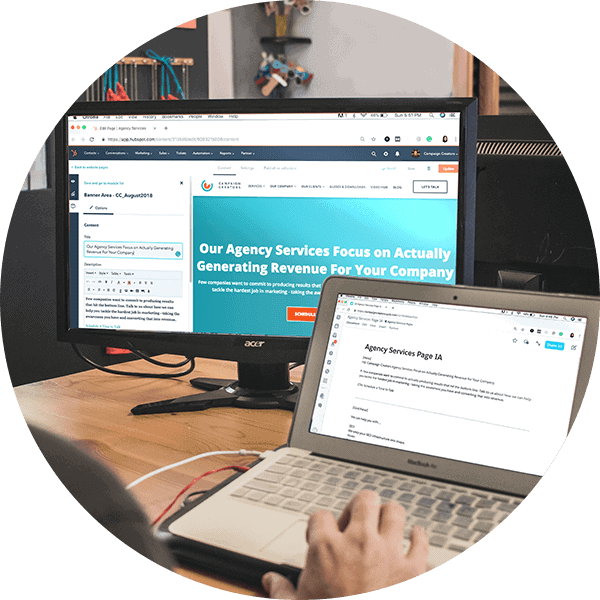
Waypost was recently named one of Clutch’s top marketing firms in South Carolina
August 30, 2021
Organize Your HubSpot Portal with These 9 Quick Tips
August 5, 2022Here we are in 2022, and the pandemic has rewritten the book on brand strategies.
The lockdowns and other restrictions in 2020 thrust several industries into survival mode. They led to a dramatic change in consumer behavior and spending habits. Nearly two years later, as we begin to accept this “new normal,” businesses should reevaluate their brand development and adapt new approaches to growth in the coming year. As your business moves into 2022, here are five brand strategies to consider in a post-COVID world:
1. Hold your brand to a higher standard.
The past two years have brought social issues to the forefront of consumers’ consciousness. They are actively researching a company’s values before making a purchase. In a study conducted by McKinsey, 61% of consumers claimed that how a brand responds during a crisis will determine if they continue buying from that brand when the situation is over.
Whether you like it or not, we’re living in the era of Brand Purpose. You must be able to answer your company’s WHY, and the consumer needs to be aware of it. Find your organization’s passion and identify ways to draw parallels to your product or service. Make your purpose the cornerstone of your culture and be a role model for that purpose.
Your company doesn’t exist to save the world; consumers understand that. But modern consumers do expect you to prioritize social responsibility. Brands that endeavor to do good are destined to do better. Doing good starts with identifying and rallying behind your brand’s higher calling, so make Brand Purpose a priority in 2022.
2. Focus on community.
The pandemic forced individuals and businesses to unite as a community and help each other in difficult times. If you haven’t already, your brand should adapt its marketing strategy to this shift. Try taking a grassroots approach to communication by localizing your brand experience. Brands that focus on supporting and nurturing their local communities in times of crisis will stand out from their competitors and gain customer loyalty and trust.
Jennifer DaSilva is the founder of Start Small Think Big; a non-profit focused on helping entrepreneurs from disadvantaged communities. Recently she said, “One of the things about a crisis is that it does bring out creativity and ingenuity and, typically, collaboration and incredible generosity. When people work together, they can accomplish more, so I think this has changed everybody and brought many closer together. People have to pivot, think more creatively and think more collaboratively. So this is forcing people into that space where things that were nice to do before are now imperative.”
The community-focused trend is likely here to stay, so take some time early in 2022 to think about how you can creatively impact your local community.
3. Prioritize collaboration and partnerships.
In the same vein as the previous trend, companies are becoming more open to collaboration and partnerships with other like-minded businesses. Collaboration is certainly not a new trend, but it gained a footing at the start of the pandemic and hasn’t slowed. In early 2020, when mass closures and travel restrictions heavily impacted small businesses, business owners quickly noticed the benefits of partnerships and collaboration.
By partnering with another company, you gain access to each other’s knowledge. In the words of Benjamin Franklin, “An investment in knowledge pays the best interest.” Partnerships increase your expertise, allow you more resources to provide better products or services and help reach a greater audience. Partnerships can also enhance your business’s credibility. According to Profit.co, when companies that share the same goals and vision join forces, the influence and strength of each organization can grow dramatically. Stronger businesses provide better products and deliver more qualitative services to customers, which boosts overall brand equity.
As evidenced, partnerships can be very beneficial to all parties involved. Still, you must consider several factors before choosing a partner or collaborator. You must trust your partner’s decision-making, temperament, and competence, and vice versa. Your company goals and values must also align. Partnering with a company that does not share your primary objectives will inevitably lead to a clash of values and drive a wedge into the partnership.
4. Adjust your content strategy.
One of the biggest challenges for brands in 2022 will be to cope with ever-changing consumer behavior. Business-related restrictions due to COVID-19 seem to be lessening with time. Still, new variants are bound to surface, and businesses need to be prepared to handle that. As witnessed in the past two years, this will require you to adapt your communication strategies quickly.
It’s important to remember that changes in your brand marketing can significantly impact your brand and lead to an almost immediate increase or reduction in your brand value. In 2022, it will be crucial for your business to determine what kind of content it’s putting out and what channels you use to communicate with your consumers. High-quality content is essential to maintaining brand consistency.
5. Rethink your company culture.
Have you thought about your company culture recently? If you haven’t, think about making it a priority in 2022. A healthy company culture will attract the best job candidates and keep them engaged as employees. According to a recent Glassdoor study, 77% of adults evaluate a company’s culture before applying for an open position, and 56% rank a company’s culture as more important than compensation. Let that sink in—more than half of current jobseekers value culture over salary.
The 2020 Jobvite Jobseeker Nation Report reiterated these findings. They found that 40% of candidates believe culture is vital in the application process, with 81% of job seekers citing it as deciding factor. 39% of workers cited company culture as one factor influencing their decision to accept a job offer. Perhaps even more surprising is that of the 34% of job seekers who left a job within the first 90 days, 35% cited company culture as their primary reason for going.
Are you losing skilled employees and quality job candidates because your company culture is not a priority or maybe even non-existent? Crafting, improving, and cultivating your company culture can be a long journey. Take decisive steps forward in 2022, and you will ultimately benefit your company and lead to measurable success.
What will you prioritize in 2022?
What is brand development, and what does it mean for your company? Considering these trends, it’s imperative that businesses reevaluate their brands and adapt new brand strategies to grow in the coming year. Whether you need to define your company’s brand and culture or you need strategic content marketing, Waypost can help you succeed in 2022. Contact us today to get started.







